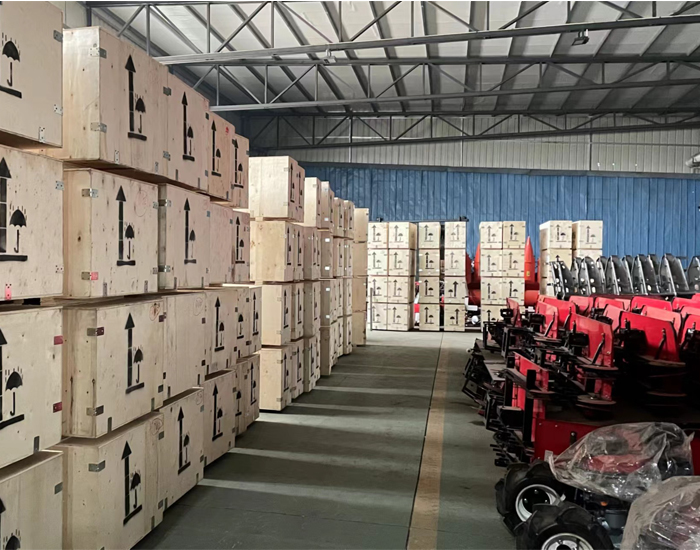forage harvester
The Evolution and Impact of Forage Harvesters in Modern Agriculture
Forage harvesters have revolutionized the way farmers gather and process forage crops, playing a crucial role in modern agriculture. These specialized machines are designed to efficiently harvest various types of forage, including grasses, legumes, and silage crops, making them indispensable in the production of animal feed. This article will explore the evolution, functionality, and impact of forage harvesters in contemporary farming practices.
The Evolution of Forage Harvesters
The concept of forage harvesting dates back centuries, but the development of dedicated machinery began in the early 20th century. Initially, farmers relied on simple hand tools, such as scythes and sickles, to cut grass and other forage. However, as agriculture progressed, the demand for more efficient and effective methods of harvesting increased.
The first mechanical forage harvesters emerged in the 1940s and 1950s, transforming the way farmers operated. These early machines were relatively simplistic, often requiring multiple passes to complete the harvest. Over the decades, technological advancements have led to significant improvements in design, efficiency, and functionality. Today's forage harvesters are equipped with features like automated controls, GPS navigation, and high-capacity chopping systems, allowing for seamless operation and maximum productivity.
Functional Design and Operation
Modern forage harvesters operate on a straightforward yet effective principle. They are designed to cut, chop, and store forage crops, ensuring that the material is ready for use as animal feed. The machine typically comprises several key components the cutter head, which slices through the plants; the impeller, which transport the chopped forage; and a collection system, which can either pack it directly into wagons or store it in silage bags.
The versatility of forage harvesters is one of their most significant advantages. They can efficiently handle a range of crop types, including alfalfa, clover, and corn, adapted specifically for silage harvesting. Depending on the model, farmers can adjust the cutting height and the size of the chop, tailoring the process to their specific needs. This adaptability not only enhances the quality of the forage but also maximizes the nutritional value for livestock.
forage harvester

Impact on Agricultural Productivity
The impact of forage harvesters on agricultural productivity cannot be overstated. By mechanizing the harvesting process, farmers can drastically reduce the time and labor required to gather forage. This efficiency translates into cost savings and allows farmers to manage larger operations without a corresponding increase in labor costs.
Moreover, the use of forage harvesters contributes to better forage quality. The precise cutting and immediate processing of the harvested material help preserve nutrients and reduce spoilage. Freshly cut forage can be stored without losing its nutritional value, ensuring that livestock receive a consistent and high-quality diet, which is essential for optimal growth and production.
Sustainability and Future Perspectives
As the agricultural landscape continues to evolve, sustainability will play a critical role in the development and use of forage harvesters. Modern machines are increasingly designed with fuel efficiency and reduced emissions in mind, aligning with global initiatives to decrease the carbon footprint of farming. Additionally, precision agriculture techniques are being integrated into forage harvesting, allowing for more targeted interventions that conserve resources and minimize waste.
Looking ahead, the future of forage harvesters will likely include advancements in automation and data analytics. The integration of artificial intelligence and machine learning could further enhance operational efficiency, giving farmers valuable insights into optimal harvesting times and practices.
Conclusion
In conclusion, forage harvesters are pivotal to the efficiency and success of modern agriculture. Their evolution from simple hand tools to sophisticated machinery has transformed not only how farmers harvest forage but also how they manage livestock feeding and overall farm productivity. As technology continues to advance, forage harvesters will undoubtedly become even more integral to sustainable agricultural practices, ensuring that farmers can meet the ever-growing demands of food production while caring for the environment.
Latest news
-
Mini Combine Harvester for Soybean | Compact & Efficient Soybean Harvesting SolutionsNewsNov.24,2025
-
Mini Combine Harvester for Paddy – Compact, Efficient Rice Harvesting SolutionsNewsNov.24,2025
-
Mini Chain Harvester: Compact Forestry Solutions for Sustainable LoggingNewsNov.23,2025
-
Kartar Mini Harvester – Compact, Efficient Harvesting Machinery for Small FarmsNewsNov.23,2025
-
Compact Power: Elevate Your Farming with Harvesting Machine SmallNewsNov.22,2025
-
Discover the Power and Potential of Harvester Mini Combine Machines | Efficient Small-Scale HarvestingNewsNov.22,2025








